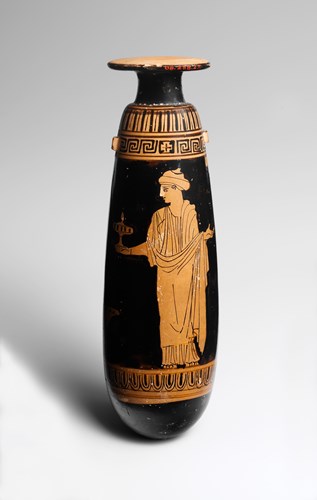Ninth day | 22nd of Boedromion | Plemochoae
The happy atmosphere of the ninth day replaced the mystery, religious fervour, and excitement of the previous nights. The largest part of the day was dedicated to festive celebrations. The day is known as “plemochoae” from the name of a unique vessel used for libations and rituals devoted to the dead. The plemochoe was a ceramic vessel with a convex-shaped body, a lid, and a stemmed ring foot. The mystai filled two plemochoae with a liquid and made one stand up towards the east and one toward the west. Then, they overturned and poured them out while pronouncing a mystic formula. The content of the formula is unknown. Perhaps they called upon the heavens to send the rain needed for a successful harvest and upon the earth to be receptive and fertile towards humanity. On the same day, the fai…





